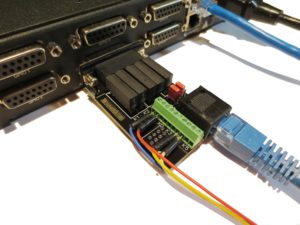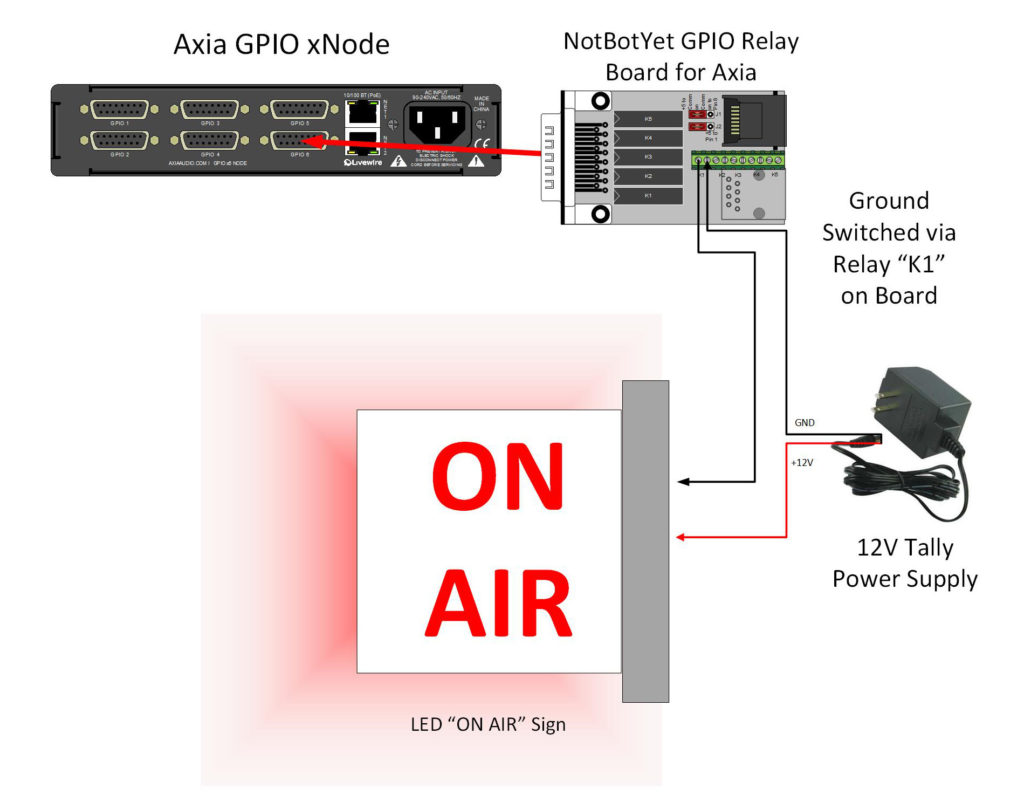The NotaBotYet GPIO Relay Board for Axia can be used to control most LED-based on-air lights for studios. Most of these types of lights run on 12 volts and can use up to a couple hundred milliamps of current. This is far beyond the 20 milliamp limitation of a GPIO port on an Axia device. Many engineers have resorted to creating some type of perf-board circuit with transistors or relays to control these on-air lights. Some have even used expensive high current relay products designed to switch only one of the old fashioned 110-volt on-air lights.
The problem is that few of these methods are easy or quick to install, and some are just downright expensive. With the NotaBotYet GPIO Relay Board, NotaBotYet has already done the heavy lifting for you to make your installation fast, easy, and cost effective. Typically, when using this board, the most time will be spent screwing the on-air light to the wall, rather than the actual hookup.
The diagram above demonstrates how it all goes together. All that is required to get the on-air light lit is: an led-based on-air light, a GPIO port on any given Axia device (it is assumed the programming to activate the bit on the port when a mic is open on the console has already been completed in the Axia environment), a 12v power supply to power the light itself (usually included with the on air light), some wire (between the on-air light and the board and power supply), and the NotaBotYet GPIO Relay Board for Axia.
 Connecting the inputs to the board is as simple as plugging the board into the desired 15 Pin GPIO port, and tightening the retaining screws.
Connecting the inputs to the board is as simple as plugging the board into the desired 15 Pin GPIO port, and tightening the retaining screws.
The normally open relay contacts will activate upon the GPIO port bit closing to ground, thereby completing the circuit to the tally light, and remaining completely electrically isolated from the other relays on the board as well as the GPIO port itself. Output connections are made on a standard “phoenix” type terminal block.
Using Axia’s Pathfinder software will allow advanced control of most GPIO ports in an Axia Livewire network with a granularity down the level of each bit on a particular port. Using Pathfinder in conjunction with the Relay Board can allow one Relay Board to control up to five on-air lights simultaneously. That has the potential to offer very significant cost savings over solutions that can only light one on-air light.

